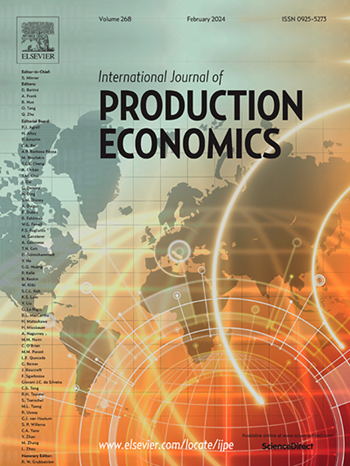制造商为什么要推出虚拟NFT产品?期望库存水平的作用
IF 10
1区 工程技术
Q1 ENGINEERING, INDUSTRIAL
引用次数: 0
摘要
制造商在从生产传统有形产品过渡到生产无形产品时可能面临风险,例如虚拟不可替代代币(nft),这与制造商的传统产品有很大不同。很少有学者探讨制造商为什么选择推出虚拟nft。在企业行为理论的激励下,我们假设库存过剩的企业可能会采取旨在减少过剩的问题搜索策略,从而利用NFT发布作为营销工具来提高实体产品的销售和增加库存周转率。相反,库存水平低于目标的公司可能会通过闲置搜索方法采用nft,利用这种新技术作为创新策略来提高库存绩效并保持竞争优势。我们选取了104家在美国上市的制造企业发布的关于虚拟NFT产品的公司公告,并测试了我们的假设。研究结果表明,无论是积极的还是消极的,库存水平偏离其期望的制造商倾向于推出nft。此外,环境因素,如强烈的公众关注和强烈的同伴压力,大大加强了这种倾向。本研究通过将库存管理与技术采用联系起来,并阐明实体库存条件如何驱动企业决定采用新兴的无形NFT产品,丰富了运营管理文献。本文章由计算机程序翻译,如有差异,请以英文原文为准。
Why do manufacturers launch virtual NFT products? The role of aspirational inventory levels
Manufacturers may face risks when transitioning from producing traditional tangible products to intangible ones, such as virtual non-fungible tokens (NFTs), which differ significantly from manufacturers' conventional offerings. Few scholars have explored why manufacturers opt to launch virtual NFTs. Motivated by the behavioral theory of the firm, we hypothesized that firms with excess inventories are likely to engage in problemistic search strategies aimed at reducing surplus, thus using NFT launches as marketing tools to enhance the sales of physical products and increase inventory turnover. Conversely, firms with inventory levels below their targets may adopt NFTs through slack search approaches, leveraging this new technology as an innovation strategy to bolster inventory performance and maintain competitive advantages. We sampled 104 firm-level announcements regarding virtual NFT products launching from U.S.-listed manufacturing firms and tested our hypotheses. The findings indicated that manufacturers with inventory levels deviating from their aspirations , whether positively or negatively, tended to launch NFTs. Furthermore, environmental cues, such as strong public attention and intense peer pressure, significantly reinforced this tendency. This study enriches the operations management literature by bridging inventory management with technological adoption and elucidating how physical inventory conditions drive firms’ decisions to embrace emerging intangible NFT products.
求助全文
通过发布文献求助,成功后即可免费获取论文全文。
去求助
来源期刊
CiteScore
21.40
自引率
7.50%
发文量
266
审稿时长
52 days
期刊介绍:
The International Journal of Production Economics focuses on the interface between engineering and management. It covers all aspects of manufacturing and process industries, as well as production in general. The journal is interdisciplinary, considering activities throughout the product life cycle and material flow cycle. It aims to disseminate knowledge for improving industrial practice and strengthening the theoretical base for decision making. The journal serves as a forum for exchanging ideas and presenting new developments in theory and application, combining academic standards with practical value for industrial applications.

 求助内容:
求助内容: 应助结果提醒方式:
应助结果提醒方式:


